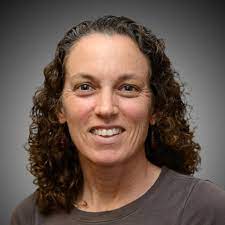
Ariel Lang, PhD, MPH, Director of VA’s Center of Excellence for Stress and Mental Health at the San Diego VA Healthcare System
SAN DIEGO — Every veteran suffering from post-traumatic stress disorder has a different experience—a different collection of symptoms, interacting in ways unique to that veteran’s life and experience. Consequently, the therapy to treat those veterans needs to be as flexible and multifaceted as the disease itself. That includes treatments that for many years have been labeled “alternative therapies” but are becoming more and more common as veterans seek a therapeutic combination that works for them.
As director of VA’s Center of Excellence for Stress and Mental Health at the San Diego VA Healthcare System, Ariel Lang, PhD, MPH, has focused her research and clinical work on these alternative therapies, specifically on meditation and how it can be a useful tool for veterans fighting the sometimes overwhelming symptoms of PTSD.
“I’ve found over the years that my patients were asking for alternatives,” Lang explained. “It’s not that the things we have are bad, but they’re not the answer for everyone. So I wanted to start putting some evidence toward things that people were asking for. I can’t feel good about recommending a particular treatment to someone if it’s totally unknown whether it’s going to work or not.”
Lang began her work with psychotherapy that included mindfulness meditation. This is a meditation technique that focuses on being intensely aware of what you are sensing and feeling at the moment without latching on to any particular feeling or emotion or passing judgment on those feelings.
She then moved on to compassion meditation, which focuses on benevolent thoughts toward yourself and others and has been found to keep a patient’s mind from wandering and consequently becoming overwhelmed. From there, she moved on to mantra repetition, which involves the repetition of words and phrases to promote focus.
“I got interested in that because one of my colleagues was studying it. And it’s an easy approach,” Lang said. “I’m a pragmatist. I want to bring evidence to things that veterans are asking for.”
Lang acknowledged that meditation isn’t for everyone. But neither is any other PTSD therapy.
“Someone who comes into VA for the first time is going to hear about a whole range of options for PTSD,” Lang explained. “First thing are the empirically supported psychotherapies, because those are the things we can say on average help people. Sometimes people do that, and they still have symptoms that bother them. Or they don’t want to do that. Then you start to have a conversation about the other things that are available.”
Many veterans—especially younger ones—avoid medications, Lang noted. In recent years, VA has shifted to thinking about patients’ health in holistic terms and what VA can do to improve their lives as a whole, rather than merely targeting their symptoms.
That can be where meditation comes in.
“Times have changed. VA has recognized the need for complementary and alternative approaches,” Lang said. “Clinicians are happy to have these options. And there are veterans who are like, ‘I’m not doing that.’ And that’s their right. But there are others like the guy who will come into my office and say that mantra repetition changed his life. There’s not a one-size-fits-all treatment. Just like there’s no one-size-fits-all veteran. We need to meet them where they are.”
It’s clear that meditation is effective for some veterans suffering from PTSD. But what are the mechanics behind that effectiveness? That’s the question Lang is currently trying to answer.
“You can think of PTSD in some ways as a problem with attention. Someone is sitting at work and, all of a sudden, their attention is drawn away to something traumatic in the past. They don’t want their attention to go there, but it does, and they find it hard to direct that,” Lang explained. “Maybe one of the things that’s happening with meditation is that people are learning to control their attention.”
Another common symptom of PTSD is hyperarousal. Some meditations can be calming for both the mind and body and could combat the jumpiness and racing heart that go along with hyperarousal.
“It’s a mistake to lump all meditations together, because they’re actually quite different,” Lang noted.
Researchers are beginning to understand which meditations work for PTSD in general. The next step will be to see which patients respond to which type of meditation and how patient and therapy can be better matched in advance of treatment.
There’s also the question of, whether meditation therapy can be taught remotely or even through a downloaded app.
“Can I sit in San Diego and have a group that involves veterans throughout the country and delivers [care] that way?” Lang asked. “Meditation is mostly available in our big urban hubs. It’s a big VA priority to make sure access is extended throughout our system.”
PTSD is tough, Lang declared, and the first treatment that a veteran tries rarely solves the entirety of the problem.
“The thing I always like to tell veterans is don’t get defeated if the first thing you try doesn’t work,” she said. “Keep trying. I don’t know what the right thing will be. But I’ll stick with you until we figure it out. I want people to not give up hope.”

